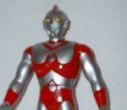Click on the speaker icons to hear the Japanese spoken.
Text to speech functionality by Responsive Voice
In Esperanto an adjective ends in "a." The plural is formed by adding "j." エスペラントは形容詞が「a」で終わります。複数形が「j」を付けて作られます。 That's my line. それは私の台詞だよ! Conjugation of irregular verbs - essential for those learning English. 英語を学習する上で不可欠な、不規則動詞の活用。 The following verbs only take the to-infinitive as their object. 次の動詞はto不定詞だけを目的語にとります。 "What is she saying?" "You don't even know 'norito'?" "Norito?" "It's something like a Shinto spell." 「なんて言ってるの?」「祝詞も知らないのか?」「祝詞?」「神道の呪文のようなもん。」 There are two ways of using the infinitive as an adjective, 1. attributive, 2. predicative. Naturally 2. is a subject complement. 不定詞の形容詞的用法には2種類あり、①限定用法、②叙述用法。②はもちろん主格補語です。 I'm teaching basic participial constructions now, but, with regard to those below, what different ways of translating them would everybody use? 今、基本的な分詞構文を教えているのですが、皆さんは以下の分詞構文の訳については、どのように異なる訳し方をされますか? In English there are eight main parts of speech: noun, verb, adjective, adverb, pronoun, preposition, conjunction and finally interjection. 英語には8つの主な品詞があります: 名詞、動詞、形容詞、副詞、代名詞、前置詞、接続詞そして感嘆詞。 "Ah!" is an interjection. 「ああ!」は感嘆詞だ。 The name Cleopatra has become a byword for a beautiful woman. 「クレオパトラ」は美人の代名詞になっている。 Too many demonstrative pronouns; bluntly, that couldn't be harder to understand. 指示代名詞が多すぎて、正直、わかりづらいことこの上ない。 This sentence is in the present perfect. 'have' is not a verb, but an auxiliary verb. この文は現在完了形です。haveは動詞ではなく、助動詞。 You can omit the preposition in this phrase. この句では前置詞を省略できる。 Some English adverbs function as adjectives. 英語の副詞の中には形容詞の役目をするものがある。 In English, a sentence structure is usually Subject Verb Object/Complement. 英語の文構造は大抵、主語、動詞、目的語/補語だ。 In English the verb precedes the object. 英語では動詞が目的語の前に来る。 An infinitive without a 'to' attached is called a bare infinitive. toのつかない不定詞を原形不定詞と言う。 Understanding parts-of-speech is extremely important for getting the feel of word order. 品詞を理解することは、正しい語順感覚を身につけるうえで非常に大切なことです。 I'd like to ask a grammarian, isn't it possible to think of 'be + participle' like you do V C and such? 文法屋に聞きたいんですが、「be+分詞」はV Cなどのように考えることはできないんですか? Write a paragraph by using adjectives to describe the person's appearance. その人の格好を画きに形容詞を使って段落を書いてください。 This type of noun phrase is called a "concealed question". このような名詞句を隠れ疑問文(concealed question)といいます。 Suffixes, 1: "-ion" creates nouns that show the meaning of 'action, state, process, results,' and so on. 接尾辞について、1:【-ion】「行動、状態、過程、結果」などの意を表す名詞を作る。 'Verb' refers to the predicate verb. Predicate verbs change their form depending on the subject and the time expressed. 動詞は述語動詞のことです。述語動詞は、主語や表す時によって形を変えます。 A complete intransitive verb takes neither complement nor object. 完全自動詞は補語も目的語もとらない。 I can sing this song without looking at the lyrics. 私はこの歌を歌詞無しで歌える。 A sentence normally has a subject and a verb. 文には普通、主語と動詞がある。 Alex seemed to learn nouns such as "paper," "key" and "cork," and color names such as "red," "green" and "yellow." アレックスは「紙」「鍵」「コルク」のような名詞や、「赤」「緑」「黄色」のような色の名も覚えたように見えた。 Accordingly, besides noun declension patterns, there also existed a greater variety of verb conjugation patterns than in Modern English. このように、名詞の変化のパターンがある他に、動詞の語形変化も現代英語よりもいろいろな種類がありました。 The relative pronoun 'that' has two states, a nominative case and objective case, but there is no possessive case. 関係代名詞のthatは、主格、目的格の2つであり、所有格はありません。 With verbs there are intransitive verbs that don't take an object, and transitive verbs that do take an object. 動詞には目的語をとらない自動詞と、目的語をとる他動詞があります。 I can sing this song without the text. 私はこの歌を歌詞無しで歌える。 Can you conjugate this verb? この動詞の変化を言えますか。 In a progressive tense sentence it becomes the -ing form verb, that is the present participle. 進行形の文では、動詞のing形、つまり現在分詞となります。 That's MY line! それは私の台詞だよ! 'needless to say' is often introduced as an idiomatic expression in the infinitive. needless to sayは不定詞の慣用表現として紹介されることが多いです。 That's MY line! それはこっちの台詞だよ。 "Ah" is an interjection. 「ああ」は感嘆詞だ。 When indicating 'tense' in Chinese, as shown above, there are 'particles', 'time-specifying words' and also many cases where it depends on context. 中国語においては「テンス」を表す場合には上述のように「助詞」か「時を表す語」または文脈によるものが多い。 These adjectives are all positive. これらの形容詞は全部が積極的です。 The verb 'help' takes to-infinitives and bare infinitives but bare infinitives are said to be the most common in casual text; as also used in this example sentence. 動詞helpはto不定詞・原形不定詞の両方をとりますが、くだけた文体では原形不定詞が多いとされており、この例文でもそれが使われています。 Things that modify nouns (adjective, or adjectival equivalent). 名詞を修飾するもの(形容詞、または形容詞相当語句)。 I cannot recall the words of the song. 私はその歌の歌詞を思い出すことができない。 That's my line! それはこっちの台詞だよ。 I studied my part in the play. 僕は芝居の自分の役の台詞を覚えた。 However, the preposition+relative pronoun (which) part becomes a relative adverb (where). しかしながら、前置詞+関係代名詞whichの部分が関係副詞whereとなっています。 If you look at the lyrics, they don't really mean much. 歌詞を見てみれば、あまり意味が無いことに気付くでしょう。 An actor has to memorize his lines. 役者は台詞を暗記しなければならない。 With the subjunctive past all the 'be' verbs become 'were', OK? 仮定法過去の場合be動詞はすべてwereになるんだよ? One of the greatest hurdles facing middle school students learning English is relative pronouns. 中学生が英語を学ぶ際の最難関の一つが関係代名詞です。 The problem quoted isn't one, but there are problems in the reading section that ask you to distinguish relative pronouns from relative adverbs. 引用した問題ではありませんが、関係代名詞と関係副詞の使い分けを問う問題がリーディングセクションにはあります。 He concentrated on his study of prepositions. 彼は前置詞の勉強に専念した。 Cue cards are used primarily on television to help the actors remember their lines. キューカードは主にテレビで使われ、俳優に台詞を思い出させる役割をする。 Cue cards are used primarily on television to help the actors remember their lines. テレビでは俳優が台詞を思い出せるようにキューカードが主に使われる。 I found the lyrics, but I can't copy paste them. 歌詞は見つかったがコピペできない。 Write two expressions that are followed by either count or non-count nouns in conversation. 可算名詞か不可算名詞かどちらかを従えている表現を2つ書け。 In Esperanto, nouns end with "o". Plurals are formed with the addition of "j". エスペラント語では、名詞は「o」で終わります。複数形は「j」をつけることで表されます。 Supplementary information includes adverbs and things that function as adverbs. 補足情報には、副詞や副詞のはたらきをするものが入ります。 That's my line! それは私の台詞だよ! '-osity' is an abstract noun word ending created from the ending of an '-ous' adjective. 「-osity」は語尾が「-ous」の形容詞から作られる抽象名詞の語尾。 Adverbial time clauses (here 'when') write about the future in the present tense. 時の副詞節(ここではwhen)は、未来のことがらを現在時制で表します。 It's OK to think of 'five minutes' as a noun phrase, right? 「five minutes」って名詞句でいいんですよね? This verb is normally used only in the third person. この動詞は普通、3人称でのみ使われます。 That's my line. それはこっちの台詞だよ。 Sometimes a verb is derived from a noun and sometimes it is the other way around. 名詞から動詞が派生していることもあれば、その逆のこともある。 When the antecedent is this, that, these or those it is usual to use 'which'. 先行詞がthis,that,these,thoseの場合はwhichを用いるのが普通です。 'can' is an auxiliary verb, so in question sentences it is brought to the start of the phrase. canは助動詞ですので、疑問文では文頭に持ってきます。 I don't like learning irregular verbs. 不規則動詞の勉強は好きではない。 Relative pronouns perform as 'conjunction + pronoun'. 関係代名詞は「接続詞+代名詞」のはたらきをしています。

